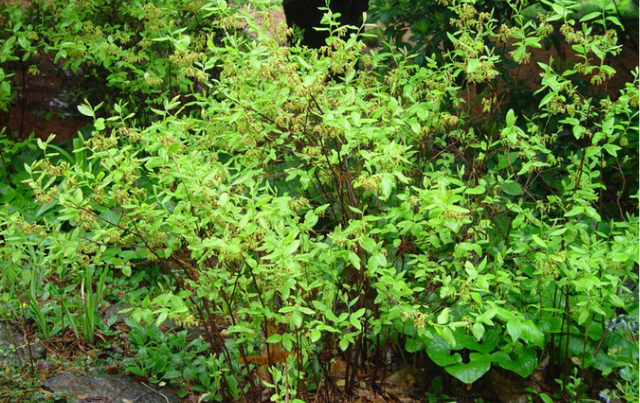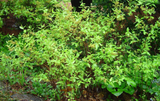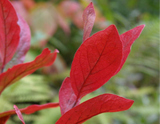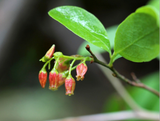- 2024 Native Trees
- >
- Shrubs
- >
- Black Huckleberry (Gaylussacia baccata)
Black Huckleberry (Gaylussacia baccata)
Height: 2 to 3 feet
Spread: 4 to 5 feet
Bloom Time: April to June
Bloom Description: Pink to Burgundy
Sun: Full Sun to Part Shade
Suggested Use: Fruit, Pollinator Gardens and Naturalized Areas
Tolerate: Drought, Rocky Soils
Native to: Jefferson County
Warning: If you purchase this plant it may result in your spouse wearing a cowboy and duster, walking around the yard impersonating Doc Holliday from Tombstone, “I’m your huckleberry,” while your dog sings Oh My Darlin, Clementine out of tune.
Black Huckleberry is a native of Jefferson County’s rocky bluffs overlooking the Ohio River and streams; however, through development, farming, and logging most of the population has been expatriated.
A low growing shrub that has upright branching and grows in clumps as a result of its desire to form colonies. The branches are rather rigid, and light conditions impact the growth habit with shaded plants growing rather open and tall, while full sun plants are more compact and dense. The branches are slightly pubescent and tacky to the touch when young and with age begins to exfoliate.
The flowers are small urn to bell shaped red flowers that appear throughout the spring which are pollinated by bees. Huckleberries yield both nectar and pollen. Bees find the flowers to be very attractive with the honey having a pink tinge with a fruit-like taste.
The fruits of the Huckleberry is where the common name derives. The species is closely related to cranberries and blueberries and produces a black 1/2 inch long fruit. The fruits were consumed fresh and dried by various Native American tribes, including the Iroquois, Chickasaws, and Cherokee.
Henry David Thoreau wrote in “Civil Disobedience” of joining a huckleberry party picking the fruit and spoke often of the huckleberries around Walden Pond. In medieval times, a knight coming to the rescue of a damsel would receive a garland made of huckleberries. The knight would ride into battle with the garland draped over his lance showing he is the man for the job. Over time the slang phrase developed “I’m your huckleberry” meaning ‘I am the person for the job’, thus Doc Holliday’s famous line. ■







